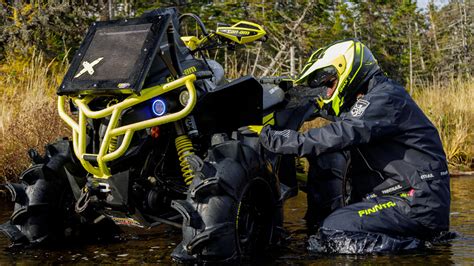Quick ATV Shock Adjustments: No Tools Needed
ATV riding is all about conquering terrain, and your shocks are your best friend (or worst enemy) in that endeavor. Getting your ATV's suspension just right drastically impacts your ride's comfort, control, and overall performance. But what if you're out on the trail and need a quick shock adjustment? You don't always have a toolbox handy. This guide will cover simple, tool-less shock adjustments to help you fine-tune your ride on the fly.
Understanding Your ATV Shocks
Before diving into adjustments, it's crucial to understand the basics. Most ATVs feature shocks with pre-load adjusters. This is a knob or dial, typically located on the shock body itself, that controls the spring's initial compression. Adjusting the preload changes the ride height and how the suspension reacts to bumps. These adjustments are usually quick and easy to do without tools.
Common Preload Adjustment Types
-
Dial-type Adjusters: These are often found on higher-end ATVs. They feature a numbered dial for precise adjustments. Turning the dial clockwise usually increases preload, stiffening the ride.
-
Knob-type Adjusters: Simpler than dial-type, these offer a less precise adjustment but are still effective for on-the-fly changes. Again, clockwise typically increases preload.
-
Threaded Collar Adjusters: Some models use a threaded collar that you turn by hand. Turning the collar affects the spring's preload.
How to Make Quick ATV Shock Adjustments (No Tools Needed)
The process is surprisingly simple:
-
Locate the Preload Adjuster: This is usually easily accessible on the shock body, often near the top or bottom. Check your owner's manual for the exact location if you're unsure.
-
Assess Your Riding Conditions: Are you tackling rough terrain requiring a stiffer suspension? Or are you on smoother trails and prefer a softer ride?
-
Adjust the Preload: If you need a stiffer ride (more preload), turn the adjuster clockwise. For a softer ride (less preload), turn it counter-clockwise.
-
Make Incremental Changes: Don't make drastic changes all at once. Start with small adjustments, test the ride, and fine-tune as needed. A quarter to half a turn is often sufficient.
-
Test and Repeat: Ride a short distance to assess the change. If it's not quite right, make further adjustments until you achieve the desired ride quality.
H2: What is the best way to adjust my ATV shocks for a smoother ride?
For a smoother ride, decrease the preload on your ATV shocks. Turn the adjustment knob or dial counter-clockwise in small increments. Remember to test the ride after each adjustment to find the optimal setting for your preference and terrain.
H2: How do I know if my ATV shocks need replacing?
Signs your ATV shocks need replacing include: leaking fluid, excessive bouncing, bottoming out frequently, uneven tire wear, and a generally harsh or uncomfortable ride, even after adjusting the preload.
H2: Can I adjust my ATV shocks without tools?
Yes, many ATVs feature tool-less preload adjusters on their shocks. These are usually knobs or dials that you can adjust by hand. However, some more complex adjustments might require tools.
H2: What are the risks of improperly adjusting ATV shocks?
Improper shock adjustment can lead to a less comfortable and controlled ride, affecting handling and safety. Extreme adjustments can potentially damage the shocks or other suspension components over time. Always refer to your owner's manual for recommendations.
H2: How often should I adjust my ATV shocks?
Shock adjustment depends on the terrain and riding style. If you frequently switch between rough and smooth trails, more frequent adjustments might be necessary. However, for consistent riding conditions, less frequent adjustments may be needed. Pay attention to your ride quality—that's the best indicator.
Conclusion
Quick, tool-less shock adjustments can significantly improve your ATV riding experience. By understanding your shock's adjustment mechanism and making small, incremental changes, you can fine-tune your ride to match the terrain and your preferences, ensuring a safer and more enjoyable adventure. Remember to consult your owner's manual for specific instructions and recommendations for your ATV model.

